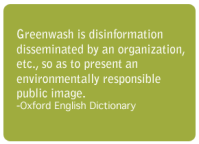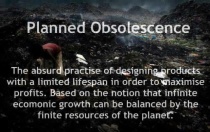
Quinoa plants
For thousands, of years the Inca, and now the Aymara and Qechua have eaten one of the few grains that grow at high altitude.
It can stand extremely hot temperatures during the day and below freezing at night in the Andean deserts above 3,600 (10,000ft +/-).
It is one of the Earth’s most nutrition laden foodstuffs…
Kinwa (Quinoa)
2013 has been declared International Year of Quinoa by the United Nations.
Once scorned by the Spanish conquerors as ‘Inca food’ and because of its sacred value in religious ceremonies, the Spanish forbade its cultivation.
But what is happening to this seed, now that the western world has discovered it?
Quinoa brings riches to the Andes
Bolivian and Peruvian farmers sell entire crop to meet rising western demand, sparking fears of malnutrition

A woman carries quinoa in Bolivia. The ‘pseudo-grain’ may be the most nutritious foodstuff in the world. Photograph: Laurent Giraudou/Corbis
A burst of colour on a monochromatic panorama, a field of flowering quinoa plants in the Bolivian desert is a thing of beauty. A plant ready for harvest can stand higher than a human, covered with knotty blossoms, from violet to crimson and ochre-orange to yellow.
Quinua real, or royal quinoa, flourishes in the most hostile conditions, surviving nightly frosts and daytime temperatures upwards of 40C (104F). It is a high-altitude plant, growing at 3,600 metres above sea level and higher, where oxygen is thin, water is scarce and the soil is so saline that virtually nothing else grows.
The tiny seeds of the quinoa plant are the stuff of nutritionists’ dreams, sending demand soaring in the developed world. Gram-for-gram, quinoa is one of the planet’s most nutritious foodstuffs. Once a sacred crop for some pre-hispanic Andean cultures, it has become a five-star health food for the middle classes in Europe, the US and increasingly China and Japan.
That global demand means less quinoa is being eaten in Bolivia and Peru, the countries of origin, as the price has tripled. There are concerns this could cause malnutrition as producers, who have long relied on the superfood to supplement their meagre diets, would rather sell their entire crop than eat it. The rocketing international price is also creating land disputes.
“Royal quinoa has given hope to people living in Bolivia’s most destitute and forgotten region,” says Paola Mejia, general manager of Bolivia’s Chamber of Quinoa Real and Organic Products Exporters.
Royal quinoa, which only grows in this arid region of southern Bolivia, is to the grain what beluga is to caviar; packed with even more protein, vitamins and minerals than the common variety.
Averaging $3,115 (£1,930) per tonne in 2011, quinoa has tripled in price since 2006. Coloured varieties fetch even more. Red royal quinoa sells at about $4,500 a tonne and the black variety can reach $8,000 per tonne. The crop has become a lifeline for the people of Bolivia’s Oruro and Potosi regions, among the poorest in what is one of South America’s poorest nations.
It is quinoa’s moment on the world stage. This year is the UN’s International Year of Quinoa as the UN Food and Agriculture Organisation recognises the crop’s resilience, adaptability and its “potential contribution in the fight against hunger and malnutrition”.
Evo Morales, the Bolivian leader whose government suggested the special recognition for the grain, said: “For years [quinoa] was looked down on just like the indigenous movement To remember that past is to remember discrimination against quinoa and now after so many years it is reclaiming its rightful recognition as the most important food for life.”
However, there are concerns the 5,000 year-old ancestral crop is being eaten less by its traditional consumers: quinoa farmers. “They have westernised their diets because they have more profits and more income,” says Mejia, an agronomist. “Ten years ago they had only an Andean diet in front of them. They had no choice. But now they do and they want rice, noodles, candies, coke, they want everything!”
Daysi Munoz, who runs a La Paz-based quinoa farming collective, agrees. “As the price has risen quinoa is consumed less and less in Bolivia. It’s worth more to them [the producers] to sell it or trade it for pasta and rice. As a result, they’re not eating it any more.”
Bitter battles are being fought over prime quinoa-growing land. Last February dozens of people were hurt when farmers fought with slings and sticks of dynamite over what was once abandoned land.
Many people who migrated to cities in search of a better life are now returning to their arid homeland to grow royal quinoa, says Mejia. Most land is communally owned, she adds, so “the government needs to set out the boundaries or there will be more conflicts”.
In the village of Lacaya, near Lake Titicaca, the farmers have recently sown quinoa. It grows faster in the wetter conditions but the variety quinua dulce is less sought after than royal quinoa.
…
What is quinoa?
Quinoa (Chenopodium quinoa willd) is actually a “pseudo-grain”, not belonging to the true grass family but a member of the goosefoot plant family, which includes spinach and sugarbeet.
Its exceptional nutritional qualities led NASA to include it as part of its astronauts’ diet on long space missions. A 1993 NASA technical paper says: “While no single food can supply all the essential life sustaining nutrients, quinoa comes as close as any other in the plant or animal kingdom.”
Quinoa is the only plant food that contains all 10 essential amino acids for the human diet. Its protein content (between 14%-18%) surpasses that of wheat, rice, maize and oats, and can be a substitute to animal protein. Its calorific value is greater than that of eggs and milk and comparable only to that of meat.
It is a source of vitamin E, vitamin B2 (riboflavin) and contains more minerals such as calcium, potassium, magnesium and phosphorus than other grains.
Recent research found quinoa contains phytoestrogens, which are said to prevent or reduce osteoporosis, arteriosclerosis, breast cancer and other conditions that can be caused by lack of oestrogen after the menopause.
NB: Qechua is spelt correctly in Qechua which does not use the ‘u’ after ‘q’. However ‘quinoa’ is a Spanish word coming from ‘kinwa’ (Qechua) and absorbed into English.
Opinion:
And what of the Altiplano Indians?
They may be getting richer, but will they suffer because of the westernised diet in favour of their traditions?






















Posted by Lottie Nevin on January 25, 2013 at 1:10 pm
I’ve never really got to grips with Qechua, or quinoa as I know it – having said that I’ve probably only ever eaten it about twice in my life. It’s probably the fact that it’s so damn healthy that put me off!
Really interesting and thought provoking post, thanks for enlightening me on this wet, dank evening in Jakarta!
LikeLike
Posted by argentumvulgaris on January 25, 2013 at 8:16 pm
>Lottie, Qechua are the people and the language, you are right quinoa is English and that’s what you would know it as. Personally, I am not keen on it, bland nor flavour, needs to go with things. I must admit, as soon as I see ‘healthy’ I balk too. Hot day here today, 37 degrees, rain expected again tomorrow and Sunday.
AV
LikeLike
Posted by Alex Jones on January 27, 2013 at 4:55 pm
Interesting food crop. I wonder if its is capable of being grown in UK ?
LikeLike
Posted by argentumvulgaris on January 27, 2013 at 5:10 pm
>Alex, I imagine that England is too hot and too low.
AV
LikeLike
Posted by Alex Jones on January 27, 2013 at 5:15 pm
This might be useful for those in the mountains of Scotland and Wales.
LikeLike
Posted by argentumvulgaris on January 27, 2013 at 5:38 pm
Scotland and Wales have 3,000 metre mountains? and 40 degrees during the day?
The plant species seem to thrive on daily weather extremes, drought and high altitudes.
AV
LikeLike
Posted by 3rdCultureChildren on January 29, 2013 at 2:38 pm
What a great, informative post! As a Biologist myself, and the owner of a quenoa tree on our front yard in La Paz, I had to stop here for a reading… thank you for sharing! 😮 We’re simply loving our time in Bolivia… so much to see and experience! If you’d be kind to give me your comments on our trip to mystic Copacabana, it’d be greatly appreciated! Thank you!
LikeLike
Posted by argentumvulgaris on January 29, 2013 at 2:51 pm
>3rd, I have seen quinoa growing, but only at a distance, but how fascinating (as a gardener) to have a plant in your yard. I love Bolivia, although at the moment I am living in Brazil. I have lived twice in Santa Cruz and traveled extensively. My experience of Copacabana was a juice, I paused there when I was travelling La Paz/Puno and chose the Kasani route instead of Desaguadero. I’ll hope across and check your post out.
Thanks for stopping by and the comment, appreciated.
AV
LikeLike
Posted by 3rdCultureChildren on January 29, 2013 at 2:52 pm
😮
LikeLike